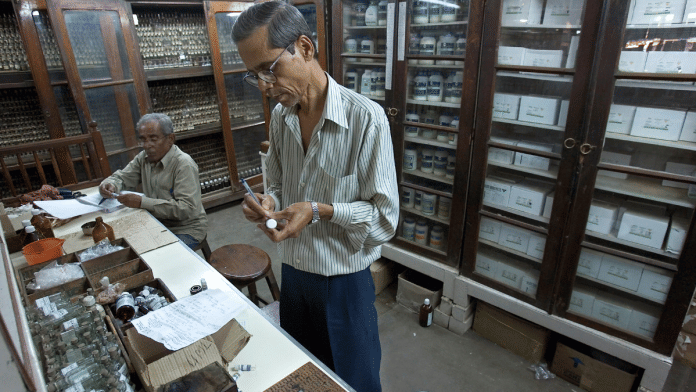Every year, on the second Thursday of October, the global community comes together to observe World Sight Day. The theme this year, Love Your Eyes at Work, serves as a helpful reminder that, in the context of our professional lives specifically, our vision is not only a priceless gift but also an irreplaceable tool.
The significance of workplace vision health cannot be overstated. As we navigate an increasingly digital and visually demanding world, our eyes are often the unsung heroes of our productivity and well-being.
Economic impact of eye health at work
Undiagnosed and unmanaged vision problems among employees result in substantial economic costs for employers and society as a whole. Direct and indirect costs associated with vision issues, including medical expenses, absenteeism and reduced productivity, place a significant financial burden on organizations. According to the World Health Organization (WHO), the annual productivity cost due to visual impairment is a staggering $411 billion, creating a significant economic burden worldwide. This figure far outweighs the estimated cost gap of addressing the unmet need of vision impairment, which is estimated at about $25 billion.
Moreover, the workplace can sometimes fall short of being the secure haven it is meant to be. Approximately 3.5 million eye injuries occur within work environments on an annual basis, comprising a noteworthy 1% of all non-fatal occupational injuries.
A considerable economic toll exists in addition to the human cost. People who have visual impairments are 30% less likely to be employed and confront formidable obstacles in finding work. This has an adverse effect on families, communities and the economy through lost wages, diminished career opportunities and other negative results.

Projections show that vision loss will increase by 55%, or 600 million people, over the next 30 years. Image: International Agency for the Prevention of Blindness (IAPB)
In addition, there are significant economic disparities, particularly between developed and developing countries. With almost four times as many cases of vision impairment as high-income regions, low- and middle-income regions face the biggest difficulties. The prevalence of vision impairment in a country’s workforce is strongly correlated with its economic development. Access to eye care and preventive measures remains a barrier in resource-constrained countries, compounding the problem further still.
Vision health as a global priority
The impact of good visual health on our lives is quite evident, and it strongly connects with the United Nations’ Sustainable Development Goals (SDGs), which acknowledge that the ability to see clearly is a fundamental part of a person’s overall health and their ability to lead a fulfilling life.
In developing countries, where the burden of vision impairment is most pronounced, achieving the SDGs hinges on addressing the barriers to eye care. Improved vision leads to better educational outcomes and enhanced employability, which, in turn, contribute to breaking the cycle of poverty.
Recognizing the urgency of the issue, international organizations and policy-makers have been taking concerted actions to tackle vision health challenges. The IAPB, working alongside the ILO, has been at the forefront of campaigns to increase awareness and advance policies aimed at preventing and addressing vision concerns in work settings.
However, the challenges remain complex. In many developing nations, limited resources and infrastructure constraints make it difficult to provide comprehensive eye care services. Additionally, cultural and societal factors may hinder individuals from seeking help until their vision problems become severe.
Challenges and solutions
Understanding the barriers to vision health in the workplace is essential. These challenges may consist of inadequate access to eye care services, a lack of understanding about eye health, and cultural stigmas associated with vision issues. The first step in overcoming them is to recognize these barriers.
For equitable access to vision care, a multi-pronged strategy is essential. This includes strengthening healthcare systems, providing affordable eyewear, and promoting workplace policies that prioritize vision health. Collaboration between governments, employers and healthcare providers is essential in addressing these challenges. In particular, the following action items should be considered:
1. Governments should consider implementing policies that require regular eye examinations for employees, especially those engaged in jobs that pose a high risk to vision health. Tax incentives and subsidies for eye care expenses can also encourage employers to invest in their employees’ vision health.
2. Private sector organizations can play a pivotal role in promoting workplace eye care. They can offer vision insurance, establish workplace wellness programmes that include eye health components, and partner with eye care providers to ensure employees have access to affordable vision care.
3. Raising awareness about the importance of vision health in the workplace is crucial. Companies can organize eye health education campaigns, distribute informational materials, and provide resources for employees to monitor their eye health. These efforts can contribute to a culture of eye care within organizations.
Prioritizing vision health
World Sight Day 2023 highlights the economic implications of vision health in the workplace. Addressing vision issues is not just a matter of individual health but a critical component of global economic stability and sustainable development.
As we reflect on this year’s theme, let us commit to prioritizing vision health in our professional lives. Governments, employers and each one of us have a responsibility to take proactive measures to make sure that everyone has healthy eyes. By doing this, we can boost productivity at work and help create a healthier, stronger global economy.
Dr. Princess Ifeoma Ike is Public Health Optometrist/CEO Princess Vision Eye Clinic Limited Abuja, Nigeria and Global Shaper, Abuja Hub, World Economic Forum
Dr. Harry Bohnsack is Past President, Canadian Association of Optometrists
This article was first published in World Economic Forum. You can read the article here.
Also read: Colorful fresh foods improve athletes’ eyesight: Study






